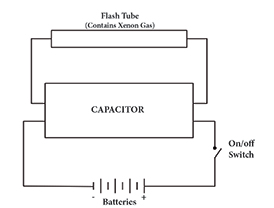 Well, we all know what a ‘flash’ is. For the sake of records, when we talk of ‘flash’, we are referring to an electronic flashgun. A flash is our carry-anywhere-source-of-light, our portable sun.
Well, we all know what a ‘flash’ is. For the sake of records, when we talk of ‘flash’, we are referring to an electronic flashgun. A flash is our carry-anywhere-source-of-light, our portable sun.
Colour Temperature of Daylight and Colour Temperature of Electronic Flash
The colour temperature of daylight changes with the time of the day and the weather conditions. The colour temperature of flash is constant and considered to be very similar to that of daylight. But wait a minute – daylight can be from very early morning to late evening before the sun sets. And we all know that the colour of sunlight changes as the day progresses, so how can we say that the colour temperature of the light emitted by the flash (which cannot change the colour of the light it emits) is very close to that of daylight? Well, photographically speaking, ‘daylight’ refers to the time that is roughly between two hours after sunrise and two hours before sunset. Between these times of the day, the colour emitted by sunlight is more or less similar to the colour emitted by flash. The colour temperature of light is measured in degrees ‘Kelvin’. Average noon daylight is considered to be around 5500K (short for Kelvin). The colour of flashlight is also around 5500K (varies a bit from make to make). The sketch shown below is an over-simplified drawing showing how a basic flashgun works.
When you put ‘on’ the power switch, the ‘capacitor’ (or ‘condenser’ as it is also called) is energized. When you trip the shutter, the voltage from the capacitor is applied to the two ends of the ‘flash-tube’, creating a momentary flash. This empties the capacitor and the cycle begins again.
To keep the topic simple, this writeup will not go into the complexity of modern dedicated flashguns or how they work. Instead, it will teach you how to use your flash for basic operations.
Almost every flashgun, howsoever advanced, allows us to use the flash in Manual mode.
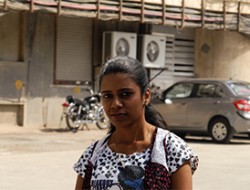
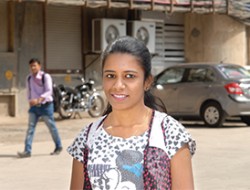
Guide Number
To use any flash in Manual mode, we first need to know its Guide Number (GN). The GN of your flash is mentioned in the user manual or can be calculated from the dial/chart on the back of the flashgun or can be verified practically using a simple test. I suggest that you verify the GN of your flashgun even though you have that figure shown in the user manual.
Note:
1) GNs shown in user manuals are often over-inflated. Secondly, GNs are designed for a room size of 10×12’ with light coloured walls and 10’ high white ceiling. When you fire the flash, the light hits the subject directly, but some light is also reflected onto the subject from the nearby walls/ceiling. This is taken into account when GNs are calculated. Obviously, you don’t always shoot in such a small (and bright) room; most of the times you shoot in very large halls or even in open spaces where there is no help from light reflected off the walls/ ceiling. Due to this fact the GN drops. Hence it is in your interest that you perform this test to confirm what I call your ‘Personalized GN’ (PGN)
2) GNs shown in user manuals are generally for ISO 100 sensitivity (unless specified otherwise). If you use a different ISO, the GN will change. If you double the ISO (example, from ISO 100 to 200), you multiply the given GN by a factor of 1.4. If you quadruplicate the ISO (that is, make it four times, for example from ISO 100 to 400), you multiply the original GN by a factor of 2.
3) GN can be in feet or meters. If shown in feet but you are comfortable working in meters, divide the figure by 3.3. If shown in meters but you are comfortable working in feet, multiply the figure by 3.3.
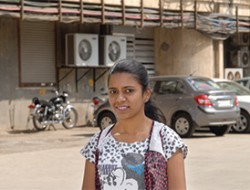
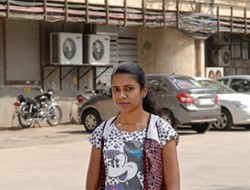
The PGN Test (Personalized Guide Number test)
1. On several pieces of cardboard or paper (about 8×10”), write down in bold figures the various apertures. So one board will have, say, f/2.8; the next, f/4; the next, f/5.6; etc.
2. Ask a friend to sit on a chair exactly 10 feet away from the camera position. Please measure the 10’ distance using a measure tape; don’t rely on your judgment! The person is supposed to hold a board, with the f/no facing the camera. So if he/she holds the f/2.8 board, you set f/2.8 on the camera. When he/she holds the f/4 board, you set f/4 on the camera and so on. It is very important that the model does not cover his/her face with the board (later on, you’ll see why).
3. Stand at the camera position with ISO sensitivity set to 100. Remember that the aperture you set on the camera should be according to the board your friend holds.
4. Set the camera as well as the flashgun to Manual mode, but ensure that the shutter speed does not exceed the maximum x-sync speed. If you are not sure what that is, set the shutter speed to 1/60sec on a safer side. Take the shot.
5. Repeat the test, each time changing the aperture on the camera as per the board your friend is holding.
6. After the shoot, you will have several flash pictures, each shot at a different aperture, but with the flashgun/camera in manual mode and at an exact distance of 10’ from the subject.
7. Examine each picture on the computer screen (not on the camera LCD) and select the one that you think is the best exposed. It will help you if you check for the proper skin-tone; that’s why I mentioned earlier that your friend should not cover his/her face with the board that he/she is holding.
8. Let’s say that the best exposure was at f/8. In that case, your Personalized Guide Number (PGN) is 80 feet for ISO 100. Why feet and not meters? We set a distance in feet, remember? If you had to set the distance in meters (as 3 meters, which equals 10 feet), your PGN would be 24 meters at ISO 100 in our example.
Remember the formula: Distance X Aperture = GN Our distance was 10 feet and our aperture for the best exposure was f/8. Hence our PGN was 80’.
Note: Some users, especially beginners, think that if the GN is say X feet, then they can shoot with that flash up to a distance of X feet. This is incorrect. Up to what distance you can shoot using a particular flashgun depends on the GN, as well as the lens you are using. Let’s take two examples.
Example A: GN 80 feet; lens 50mm f/4.
Example 2: GN 80 feet; lens 50mm f/1.4.
Simple calculation tells us that in Example A, the maximum shooting distance will be 20 feet (GN/ Aperture = Distance). Similarly, in Example B, the maximum shooting distance will be approximately 57 feet (80 divided by 1.4)
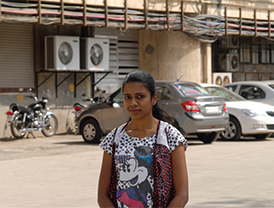
What is the advantage of shooting with flash as well as the camera in manual mode?
Take it from me, when using a dedicated flashgun, howsoever advanced your flashgun/camera is, any overly bright or any overly dark object (of a reasonably large size) within the frame could cause the flash exposure to go wrong (unless you know how to use the flash using the spot meter). When using the camera/flash in manual exposure mode, as long as you are able to correctly judge the distance between the camera and the subject and set the aperture as per the correct PGN, you cannot go wrong.
Tips for wedding photographers
1. To get consistency in your flash exposures, measure a distance of 10 feet from the point where the bride and the groom will be seated (most of the time at least). Shoot only from this distance, using the PGN/Distance = Aperture formula. Since GN is fixed and the distance is fixed, all your shots will use the same aperture, resulting in exposure consistency. You may vary the subject coverage by using a zoom lens.
2. It will make your life a bit easier if you use a single maximum aperture lens (for example, a 24-70mm f/2.8) instead of using a zoom lenses having variable apertures (example, a 18-55mm f/3.5- 5.6 lens).
Let’s use a flash to ‘fill-in’
‘Fill-in’ refers to a method of filling-in or lightening the shadows (not removing them). On many occasions, we use a flash as the main source of light. But under certain situations, using a flash as the main source of light can look unnatural, for example, when photographing someone against a bright sky or setting sun or any back-lit subject. At such times, we do not want to use the flash as the dominant light source (imagine an overly bright subject against a setting sun!); we want to just ‘fillin’ or reduce the shadows.
There are several ways to achieve this. Here is one simple method using a manual flashgun (or a dedicated flashgun in manual exposure mode). We will make use of the formula, Guide Number / Aperture = Distance.
1. Take a general meter reading of the scene using your camera meter. Let’s say that the exposure is 1/125sec at f/11 for the ISO that you are using. (Make sure that the shutter speed is within the maximum permissible for flash photography with your camera)
2. Recall from memory the PGN of the flashgun for the ISO you are using. Let’s assume it is 56 feet. Using the above mentioned formula, you know that if you were to place the flashgun 5 feet away from the subject (may be using an extension cable), the illumination on the subject’s face would be identical to that in the background (both would be f/11). This is something you do not want. You do not want the subject’s face to appear as bright as the background!
3. You want the subject’s face to be a bit less bright than the background. You may, for example, like the face to be 1-stop darker or may be 1.5 stops darker. If you want 1-stop less light on the face, you can easily calculate the required distance for the flashgun. Onestop less would be f/8, so 56/8 would give us a distance of 7 feet for the flashgun (remember, your camera exposure will still remain 125sec at f/11). If you want 2-stops less illumination on the subject, that would be f/5.6, so 56/5.6 would give us 10 feet for the flashgun (camera exposure will still remain 1/125sec at f/11). If you want 1.5-stops less light, place the flashgun approximately 8.5 feet away from the subject (once again with the same camera exposure). Don’t be afraid to experiment.
The reader may wonder as to why I have chosen to use a manual flashgun (or a dedicated flashgun in manual mode) in our example, when most flashguns available today are fully dedicated or semidedicated. Modern dedicated flashguns (and modern cameras) are not always user-friendly. Unless you are well-versed in flash photography using one of these dedicated flashguns, you are likely to go wrong. With manual operation, chances of going wrong are slim (unless you don’t know what apertures, shutter speeds, and Guide Numbers etc are).
No offence is meant, but I have seen many photographers struggle to set their dedicated flashguns the way they should be used.

